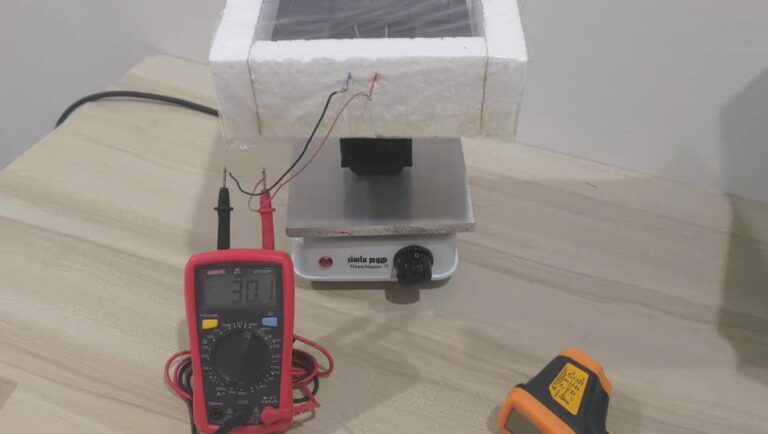Scientists in Malaysia have tested a system that combines a PV panel and thermoelectric generators (TEGs) and found it offers the potential for ‘moderate’ night-time power generation. It is suitable for small household applications such as LED lighting, laptops, phone chargers and wireless routers.
Researchers from Multimedia University in Malaysia have designed and analyzed a new hybrid system that integrates PV with thermoelectric generators (TEGs). While the PV panel produces electricity during the day, the TEG uses temperature differences around the cell to produce electricity at night.
TEGs can convert heat into electricity through the ‘Seebeck effect’, which occurs when a temperature difference between two different semiconductors causes a voltage difference between two substances. The devices are often used for industrial applications to convert excess heat into electricity. However, its high cost and limited performance have so far limited its wider application.
“While previous studies have mainly focused on improving the daytime efficiency of PV-TEG systems, or investigating the impact of TEG area and series configurations specifically for nighttime applications,” said the study’s corresponding author Chan Kah Yoong , On pv magazine. “The research aims to bridge the gap in existing literature by demonstrating how larger TEG areas and optimized configurations can significantly improve night-time power production, providing a sustainable solution for continuous energy generation.”
During their testing, the team placed a heater underneath the heat sink to monitor and simulate various temperature differences. Three different TEG surfaces were tested: one 3 cm x 3 cm system; another with a size of 4 cm × 4 cm; and two TEGs connected in series, each 4 cm x 4 cm. The PV cell to which they were attached was a polycrystalline device with an operating voltage of 9 V and an operating current range of 0–100 mA, capable of producing a peak power of 1 W.
“The 3cm x 3cm TEG can produce up to 0.9mW of power when the temperature difference reaches 55C, while the 4cm x 4cm TEG has a maximum power of 3.8mW,” the academics said . “The two quantities of 4cm x 4cm TEG in series have double the output power compared to 4cm x 4cm TEG. The maximum power here is 7.7 mW.”
In all three TEG cases, the maximum power produced was just above zero, while the temperature difference was minimal at 5 C. In the 3 cm x 3 cm TEG, the peak voltage was 114.9 V and the peak current was 8.67 A. voltage for the 4 cm x 4 cm TEG was 180.2 V and the peak current was 21.5 A. In the case of two TEGs connected in series, the maximum voltage was 340.4 V, while the peak current was approximately 21.5 A.
“This study shows how useful and affordable the system is,” the team concluded. It also noted that if a PV system with a dual 4cm x 4cm TEG were placed on the average US roof with a clear area of 1,500 square meters, the TEGs alone would produce an additional 375W of power.
“The system could be used for certain home appliances such as desktops, laptops, phone chargers, LED TVs and lights,” Yoong said. “Its potential scalability suggests that, with enough space on the roof, a significant amount of energy could be generated at night.”
The system was presented in the study “Solar-based nighttime electric power generator based on radiant cooling”, published in Energy reports.
This content is copyrighted and may not be reused. If you would like to collaborate with us and reuse some of our content, please contact: editors@pv-magazine.com.


